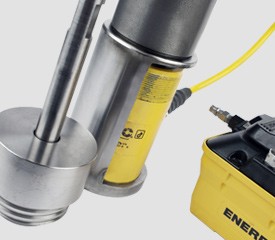Three ways to buy better drill rods.
The drill rods used on an RC drill rig are one of the more significant costs incurred when fitting out a new rig or re-equipping an existing one. The value of that significant investment can be maximised by taking advantage of the latest improvements in drill rod technology and quality.

For the latest in RC drill rod technology check out INLOK RC drill rods.
The drill rods used on an RC drill rig are one of the more significant costs incurred when fitting out a new drill rig or re-equipping an existing one. The value of that significant investment can be maximised by taking advantage of the latest improvements in drill rod technology and quality. These improvements add up in terms of increased productivity and lower operating costs.
Choosing a better rod string takes some investment in research and time. Drillers can be busy and short on time. The simplest path is to buy exactly what they bought last time but this can be a longer term mistake. The approach undoubtedly saves time but can mean missing out on the benefits and savings from product evolution. Over time those missed benefits pool into a larger and larger loss.
Another mistake is going for the cheapest and is usually committed by less experienced purchasers. Again, this seems the simplest way to save up front but seriously downplays the future consequences of equipment failure and productivity gains. It takes absolutely no time to burn way more than the savings difference when a cheap drill rod underperforms or fails in the field, underlining the adage that there’s nothing quite as expensive as cheap drilling consumables.
Having decided to look for something better, just what is a better RC drill rod? Firstly, there’s been substantial gains in sealing systems for rod inner tubes. O-ring seals on inner tubes have been used for many years and are reasonably effective, easily sourced and cheap. After O-rings came inner-tube sealing utilised custom designed and machined seals. These seals embody high tensile, high resilience characteristics and are superior to traditional O-rings in many instances. Finally, the leading edge is now stabilised and locked inner-tubes (see INLOK RC drill rods) that further extend sealing life with either O-ring or custom seals, along with other major safety and productivity benefits.
The second consideration for drill rod life is the materials that make up the rod. Leading manufacturers are using hardened high quality alloy steels for tool joints and higher tensile, wear resistant pipe for the rod and inner-tube sections. Beware of lower cost suppliers producing rods from lower tensile pipe like ASTM 106B or similar. These rods will look exactly the same as a higher quality alloy rods and are sold as though they are the same thing. However the wear life and strength of these cheap material drill rods will most certainly not be the same. Once again cheaper is ultimately more expensive.
Thirdly, another consideration that’s not obvious to the end user is the quality and reliability of the manufacturing processes. Quality drill rods use tool joints machined in precision, computerised machining centres. Quality rod assembly methods utilise leading technologies like automated, high repeatability robot welding or alternatively, friction welding. Check for, and beware of suppliers who are still manually welding rods by hand. Manual welding is often used by producers in low labour cost localities and it’s not uncommon to experience rod failures due to inconsistent manual production methods.
Keep Up With Harlsan Product News & Innovation




 Youtube
Youtube LinkedIn
LinkedIn Facebook
Facebook Instagram
Instagram